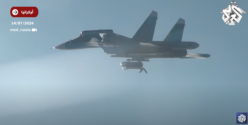Training of drivers of nuclear missile systems Yars of Russia, 161st school of technicians of the Russian Air Force. Personnel for the training of driver mechanics of the Russian Yars mobile ground missile systems. Before receiving permission to operate multi-axle military equipment, drivers are trained in driving using simulators at the 161st School of Technicians of the Strategic Missile Forces of Russia. The video shows the latest simulator for training driver mechanics of autonomous launchers of the Yars mobile missile system. The school trains driver mechanics for heavy military vehicles on the MAZ-543, MAZ-7917, MAZ-MZKT-79221 chassis, as well as support vehicles for mobile missile systems. Military simulators are designed in such a way that they allow you to simulate all possible situations with high accuracy. The leader of training sessions can not only control the actions of students in real time, but also correct them. After training on simulators, drivers are trained on real cars, but instead of rockets, water containers are installed on the truck chassis, outwardly indistinguishable from the original.
The 161st school of technicians of the RSVP was founded in 1983 and is located on the territory of the Kapustin Yar training ground in the Astrakhan region.

